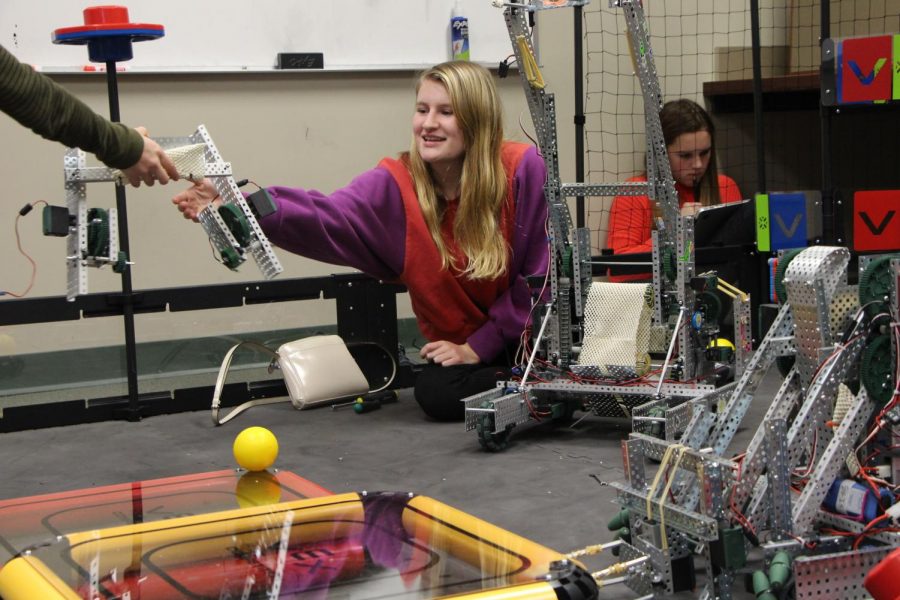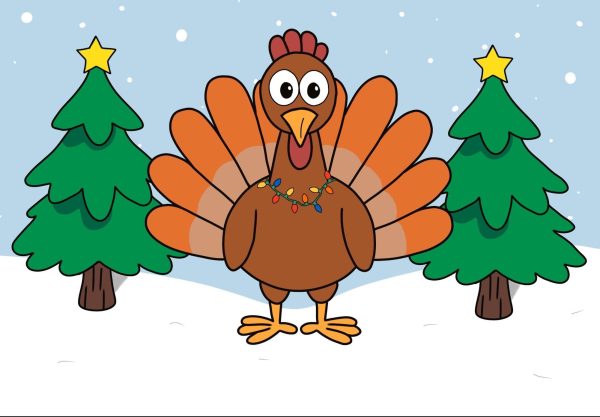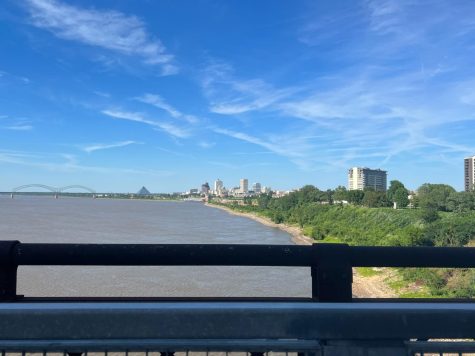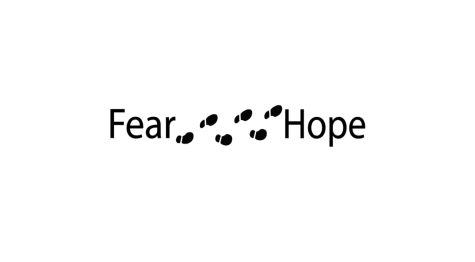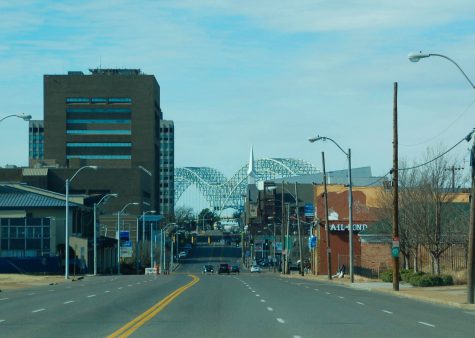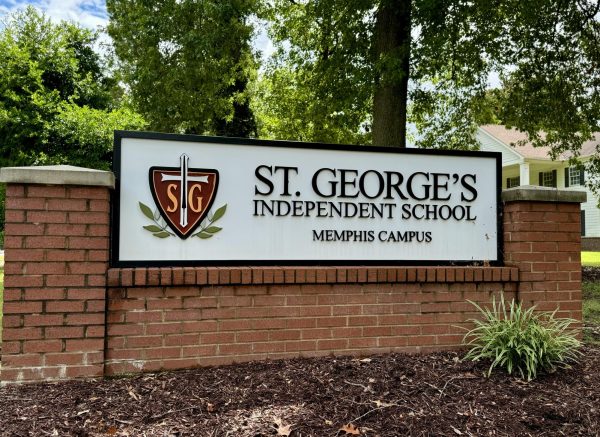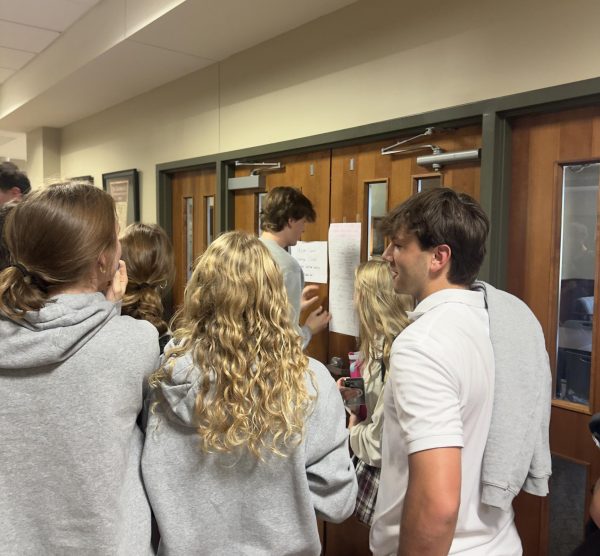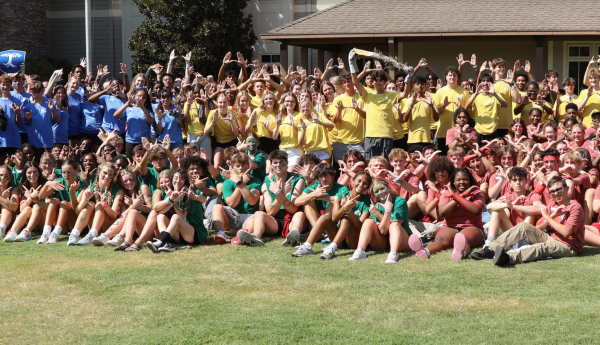Robotics on Fire
The Robogryphs heat things up in their competitive season
Photo: Snowden Farnsworth
Junior Elizabeth Crane smiles as she receives a robot base. The team collaborated on the field while preparing for the tournament.
The Robogryphs have started their competition season off with a bang. At St. George’s VRC Fall Tournament Junior Elizabeth Crane noticed something was wrong with their team’s award-winning robot.
“At first I was sort of surprised because our brain doesn’t usually smoke. That’s sort of like a rare thing. Brains don’t usually smoke,” Sophomore Kagan Sears explained. “We’ve seen people have exploding batteries and stuff, but we didn’t expect it to happen to us. So it was surprising at first. But then it started to get annoying when our second brain started to smoke. Oof. We went through a lot of brains that day,”
Junior Allison Evans and Crane were quick to notice the smoking brain and quickly adapted.
“We turned off the robot and unplugged everything and Elizabeth ran and grabbed one of the claw bots that had a brain. We took the brain off the claw bot and put it on our robot and after that I finished up the code and it all worked,” said Evans. “Then we went to our finales matches and won all of them. So after that it worked.”
Despite that bump in the road, Crane, Sears and Evans’ team managed to win some exciting awards.
They qualified for an upcoming tournament this team will be competing under the old Discover rockets at the Air and Space Museum in Washington DC. They qualified for this Signature Event.
“We are going to get to go [Washington DC] and compete against, I think, about another hundred teams around the United States that have won regional tournaments for a world’s spot,” said Crane. “So, if we win those tournaments we could get a spot at worlds, which you can also get if you win state. So now we have two chances to go to [the 2019 VEX Robotics World Championship] which is really cool.”
The St. George’s robotics team began their competition season on November 10, 2018.
“I just encourage people to come out and check out a tournament. It’s a lot of fun,” robotics competition team sponsor, Mrs. Smothers said. “I think that the excitement is a surprise to a lot of people when watching the tournaments and matches. I just don’t think they know how much fun it is to watch.”
St. George’s robotics has grown from less than ten people to over twenty in the upper school competitive robotics in the past years.
“The fact that we have so many yet so few seniors, so it’s going to get even bigger next year. We’ve got 42 kids in the middle school class, so there’s this huge interest in kids,” Mrs. Smothers said. “They aren’t all necessarily going to go into the upper school program but just having that many kids that are interested in doing this is really exciting.”
There are five teams that make up St. George’s Upper School Robotics, each varying in their levels of experience, but all work hard to be the best.
“We’ve got a couple of teams that have hit it pretty hard and a couple of teams that are still kind of getting it together, but that’s okay,” says Ms. Smothers.
In order to get to these tournaments, the robotics team has been working hard to improve their skills and learn to work together. As a group who has been improving since they started the in the program, Evans, Sears, and Crane have been working together for three years now.
“I feel like when you work on the same team, you sort of get connected with your teammates and hone your teamwork skills and stuff like that,” said Sears.
The robotics room is rarely empty even if people are in there just to hang out and support each other. They like to stay and challenge themselves to create more and perfect their experiments.
“We are all like very nerdy and just weird. Can you think of anyone that would work on a 3D print of yoda?” Evans asked.
The answer is Jacob Gettig.
“He works on the 3D printer all the time, but it was breaking and not doing what he wanted it to do. But he would spend all the time. So we have 3 3D printers,” Evans said. “He would 3D print the part he needed for the other 3D printer and put it in on the other 3D printer. But it would be the wrong size, and he would print it again and make a part to help the 3D printer. Then we got some fancy tools, and he fixed it himself. Then he 3D printed Yoda.”
The robotics team can always be found making new experiments and trying to become the next Einsteins. Whether it’s building award-winning robots, adding to their spoon collection or making a 3D printed Yoda, the robotics team is constantly innovating and working to improve their work.


